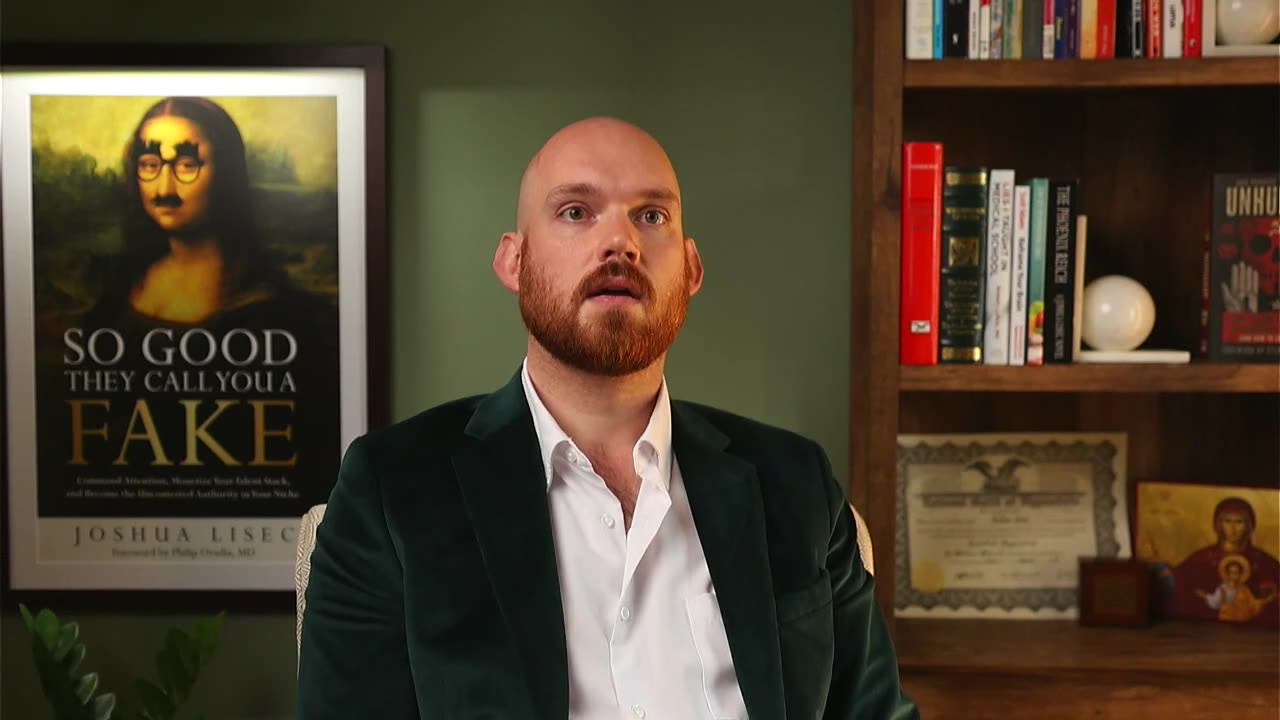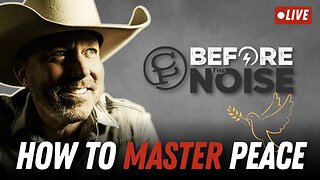Premium Only Content

Second Wave Feminist Persuasion ft. Megyn Kelly Rant — Daily Persuasion with Joshua Lisec Ep. 206
Would you like to write a persuasive BOOK? One that changes minds and influencers behavior for years to come? Start with a GOLDEN book idea. Let NEW YORK TIMES bestselling author Joshua Lisec teach you: https://lisecghostwriting.com/golden
ABOUT TODAY'S EPISODE:
What happens when second wave feminism dresses itself up as traditional values—and nobody notices? In Episode 206 of Daily Persuasion, “Second Wave Feminist Persuasion ft. Megyn Kelly Rant,” bestselling author and certified hypnotist Joshua Lisec explores the strange, subtle persuasion tactics behind Megyn Kelly’s rant and what it reveals about deeper ideological tensions.
In this sharp, insightful breakdown, Lisec draws on his signature blend of persuasion psychology, hypnotic framing, and deep language analysis to show you how much meaning is hidden beneath what’s actually said. That’s where the idea of deep structure versus surface structure comes in—a powerful linguistic framework co-developed by Richard Bandler (NLP) and inspired by Noam Chomsky.
When Megyn Kelly claimed that “young men don’t want to marry working women,” Lisec doesn’t just react. Instead, he decodes. What’s the surface structure of her statement (the literal words)? What’s the deep structure NLP reveals—the underlying assumptions and emotional projection?
It turns out that much of what passes for second wave feminist persuasion today is actually rooted in outdated ideas cloaked in a modern voice. In this case, the episode reveals how even self-styled conservative commentators fall back on feminist narratives—unwittingly using persuasive techniques that undermine their stated values.
Lisec walks viewers through how to break down these claims using Richard Bandler NLP tools like deep structure vs surface structure. Want to know how to persuade someone to do something without escalating conflict? Ask them to define their terms. When someone uses a vague generality like “we’re telling young conservative women they’re not attractive if they work,” ask: Who’s we? Who exactly is saying this? The ambiguity is the trick—and the persuasion.
This episode also covers:
• The difference between first wave and second wave feminism (and why we’re now watching second wave feminists clash with the fourth wave)
• How Noam Chomsky’s theory of universal grammar explains toddler speech—and political confusion
• How to maintain the moral high ground in persuasive dialogue without playing “gotcha”
• The danger of projection and emotional reasoning in everyday persuasion examples
Lisec explains how persuasion techniques like reframing, asking clarifying questions, and challenging fuzzy definitions can make you a more powerful communicator in any area of life—relationships, business, or political discourse.
You’ll also get real-world examples of persuasion in advertising and public discourse, as Lisec dissects how phrases like “have it all” and “settling” are used to manipulate feelings and promote certain lifestyles—particularly among women. And not just any women—conservative women, who are now being told they’re not good enough unless they pursue careers, raise kids, build empires, and somehow still look flawless.
That’s why Lisec says today’s so-called conservative feminism is just second wave feminist persuasion with a different logo. It’s the same old assumption: “Anything a man can do, a woman should do—and probably do better.” Whether it’s in a pantsuit or a primetime segment, the persuasion is the same.
By using techniques of persuasion in writing and conversation, Lisec gives you tools not only to spot the manipulation—but to rise above it. And here’s the magic: he doesn’t tell you to attack. He shows you how to use persuasion rooted in empathy, understanding, and curiosity.
🎙️ Tune in to Episode 206: “Second Wave Feminist Persuasion ft. Megyn Kelly Rant” of Daily Persuasion with Joshua Lisec. Learn how to navigate emotionally charged arguments, spot feminist framing in disguise, and use deep structure vs surface structure to ask smarter questions and shape the conversation in your favor.
Because the key to real persuasion isn’t louder talking. It’s deeper listening.
-
 2:19
2:19
Daily Persuasion with Joshua Lisec
20 days ago“Should” Is Not a Goal — Daily Persuasion with Joshua Lisec Ep. 321
451 -
 LIVE
LIVE
Caleb Hammer
3 hours agoI (almost) Gave Up.. | Financial Audit
92 watching -
 LIVE
LIVE
The Big Mig™
2 hours agoEx CIA Director Brennan Indictment Inbound
5,218 watching -
 1:36:22
1:36:22
Graham Allen
3 hours agoDems Won’t Stop CALLING FOR VIOLENCE!! + Harry Sisson DESTROYED On LIVE TV!!
70K31 -
 LIVE
LIVE
Badlands Media
10 hours agoBadlands Daily: October 22, 2025
3,211 watching -
 LIVE
LIVE
Wendy Bell Radio
6 hours agoKing Of The Trolls
6,936 watching -
 14:00
14:00
It’s the Final Round
10 hours ago $0.11 earned💰NBA Best Bets🔥Player Prop Picks, Parlays, Predictions FREE Wednesday Today October 22nd 10/22
6.15K2 -
 1:00:40
1:00:40
Chad Prather
11 hours agoHow To Live An UNSHAKEABLE Life!
56.6K29 -
 1:55:28
1:55:28
The Chris Salcedo Show
14 hours ago $6.44 earnedDems Only Like Violence Directed At Conservatives
39K11 -
 1:54:17
1:54:17
Welcome to the Rebellion Podcast
15 hours ago $1.18 earnedHappy Hump Day - Welcome to the Rebellion Podcast Live 10/22
18.1K